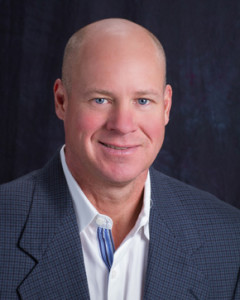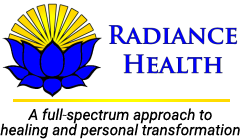 Dr. Frank Schaub grew up in St. Louis, MO and has a Bachelors Degree in Human Biology from Maryville College and graduated from Logan College of Chiropractic in 1994. He relocated to the Vail Valley for the active lifestyle which instilled a special interest in Sports Medicine Therapies. His Post-Doctorate Chiropractic Education includes: Certified Chiropractic Sports Physician, Certified Strength and Conditioning Specialist, and Functional Dry Needling also known as trigger point dry needling. Dr. Schaub has spent 20 yrs in the Vail Valley keeping his patients at peak performance and subsequently has become a specialist in sports related discomfort. Over the past twenty years, Dr. Schaub has worked with many different health care professionals for comprehensive care for his patients with complex problems.
Dr. Frank Schaub grew up in St. Louis, MO and has a Bachelors Degree in Human Biology from Maryville College and graduated from Logan College of Chiropractic in 1994. He relocated to the Vail Valley for the active lifestyle which instilled a special interest in Sports Medicine Therapies. His Post-Doctorate Chiropractic Education includes: Certified Chiropractic Sports Physician, Certified Strength and Conditioning Specialist, and Functional Dry Needling also known as trigger point dry needling. Dr. Schaub has spent 20 yrs in the Vail Valley keeping his patients at peak performance and subsequently has become a specialist in sports related discomfort. Over the past twenty years, Dr. Schaub has worked with many different health care professionals for comprehensive care for his patients with complex problems.
Dr. Schaub’s Offerings
Trigger Point Therapy
Trigger Dry Needling is a general term for a therapeutic treatment procedure that involves multiple advances of a filament needle into the muscle in the area of the body which produces pain and typically contains a ‘Trigger Point’. There is no injectable solution and typically the needle which is used is very thin. Most patients will not even feel the needle penetrate the skin, but once it has and is advanced into the muscle, the feeling of discomfort can vary drastically from patient to patient. Usually a healthy muscle feels very little discomfort with insertion of the needle; however, if the muscle is sensitive and shortened or has active trigger points within it, the subject may feel a sensation much like a muscle cramp — which is often referred to as a ‘twitch response’. The twitch response also has a biochemical characteristic to it which likely affects the reaction of the muscle, symptoms, and response of the tissue. Along with the health of the tissue, the expertise of the practitioner can also attribute to the variation of outcome and/or discomfort. The patient may only feel the cramping sensation locally or they may feel a referral of pain or similar symptoms for which they are seeking treatment. A reproduction of their pain can be a helpful diagnostic indicator of the cause of the patient’s symptoms. Patients soon learn to recognize and even welcome this sensation as it results in deactivating the trigger point, thereby reducing pain and restoring normal length and function of the involved muscle. Typically positive results are apparent within 2-4 treatment sessions but can vary depending on the cause and duration of the symptoms, overall health of the patient, and experience level of the practitioner. Dry needling is an effective treatment for acute and chronic pain, rehabilitation from injury, and even pain and injury prevention, with very few side effects. This technique is unequaled in finding and eliminating neuromuscular dysfunction that leads to pain and functional deficits.
Chiropractic Care
Chiropractic is a health care profession that focuses on disorders of the musculoskeletal system and the nervous system, and the effects of these disorders on general health. Chiropractic care is used most often to treat neuromusculoskeletal complaints, including but not limited to back pain, neck pain, pain in the joints of the arms or legs, and headaches.
Doctors of Chiropractic – often referred to as chiropractors or chiropractic physicians – practice a drug-free, hands-on approach to health care that includes patient examination, diagnosis and treatment. Chiropractors have broad diagnostic skills and are also trained to recommend therapeutic and rehabilitative exercises, as well as to provide nutritional, dietary and lifestyle counseling.
The most common therapeutic procedure performed by doctors of chiropractic is known as “spinal manipulation,” also called “chiropractic adjustment.” The purpose of manipulation is to restore joint mobility by manually applying a controlled force into joints that have become hypomobile – or restricted in their movement – as a result of a tissue injury. Tissue injury can be caused by a single traumatic event, such as improper lifting of a heavy object, or through repetitive stresses, such as sitting in an awkward position with poor spinal posture for an extended period of time. In either case, injured tissues undergo physical and chemical changes that can cause inflammation, pain, and diminished function for the sufferer. Manipulation, or adjustment of the affected joint and tissues, restores mobility, thereby alleviating pain and muscle tightness, and allowing tissues to heal.
Chiropractic adjustment rarely causes discomfort. However, patients may sometimes experience mild soreness or aching following treatment (as with some forms of exercise) that usually resolves within 12 to 48 hours.
Doctors of chiropractic may assess patients through clinical examination, laboratory testing, diagnostic imaging and other diagnostic interventions to determine when chiropractic treatment is appropriate or when it is not appropriate. Chiropractors will readily refer patients to the appropriate health care provider when chiropractic care is not suitable for the patient’s condition, or the condition warrants co-management in conjunction with other members of the health care team.
